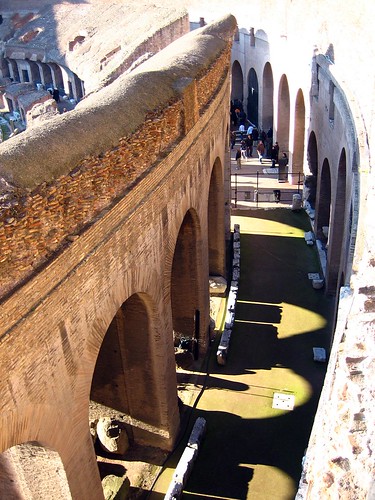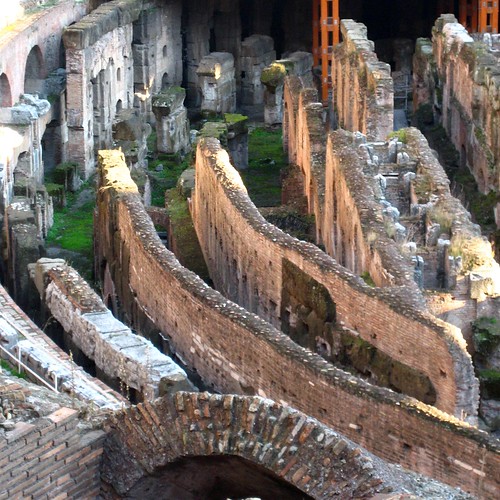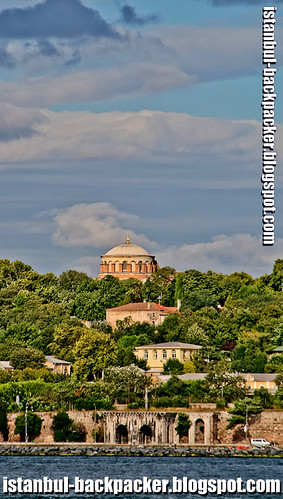Check out these christian travel sites images:
Columnal Architecture

Image by wenzday01
This kind of looks like a (fake) tilt-shift despite not being so. There’s just something about the angle, the light and the focus that makes me think that way.
***
From Wikipedia: The Colosseum or Coliseum, originally the Flavian Amphitheatre, is an elliptical amphitheatre in the centre of the city of Rome, Italy, the largest ever built in the Roman Empire. It is one of the greatest works of Roman architecture and engineering.
Occupying a site just east of the Roman Forum, its construction started between 70 and 72 AD under the emperor Vespasian and was completed in 80 AD under Titus, with further modifications being made during Domitian’s reign (81–96). The name "Amphitheatrum Flavium" derives from both Vespasian’s and Titus’s family name (Flavius, from the gens Flavia).
Originally capable of seating around 50,000 spectators, the Colosseum was used for gladiatorial contests and public spectacles. It remained in use for nearly 500 years with the last recorded games being held there as late as the 6th century. As well as the traditional gladiatorial games, many other public spectacles were held there, such as mock sea battles, animal hunts, executions, re-enactments of famous battles, and dramas based on Classical mythology. The building eventually ceased to be used for entertainment in the early medieval era. It was later reused for such varied purposes as housing, workshops, quarters for a religious order, a fortress, a quarry and a Christian shrine.
Back to Italy – Visit the World
Inside the Colosseum II

Image by wenzday01
After posting a photo yesterday of the Colosseum that looked like a (fake) tilt-shift despite not being so, I kind of see the same with this one. It probably has to do with the composition and how all the elements fall together.
***
From Wikipedia: The Colosseum or Coliseum, originally the Flavian Amphitheatre, is an elliptical amphitheatre in the centre of the city of Rome, Italy, the largest ever built in the Roman Empire. It is one of the greatest works of Roman architecture and engineering.
Occupying a site just east of the Roman Forum, its construction started between 70 and 72 AD under the emperor Vespasian and was completed in 80 AD under Titus, with further modifications being made during Domitian’s reign (81–96). The name "Amphitheatrum Flavium" derives from both Vespasian’s and Titus’s family name (Flavius, from the gens Flavia).
Originally capable of seating around 50,000 spectators, the Colosseum was used for gladiatorial contests and public spectacles. It remained in use for nearly 500 years with the last recorded games being held there as late as the 6th century. As well as the traditional gladiatorial games, many other public spectacles were held there, such as mock sea battles, animal hunts, executions, re-enactments of famous battles, and dramas based on Classical mythology. The building eventually ceased to be used for entertainment in the early medieval era. It was later reused for such varied purposes as housing, workshops, quarters for a religious order, a fortress, a quarry and a Christian shrine.
Back to Italy – Visit the World
Hagia Irene over the Ruins of Byzantium

Image by voyageAnatolia.tumblr.com
Hagia Irene is a former Eastern Orthodox church located in the outer courtyard of Topkap? Palace in Istanbul, Turkey. The building reputedly stands on the site of a pre-Christian temple. It ranks, in fact, as the first church built in Constantinople. Roman emperor Constantine I commissioned the first Hagia Eirene church in the 4th century. In 381 the First Council of Constantinople took place in the church. It served as the church of the Patriarchate before Hagia Sophia was completed in 537 … More